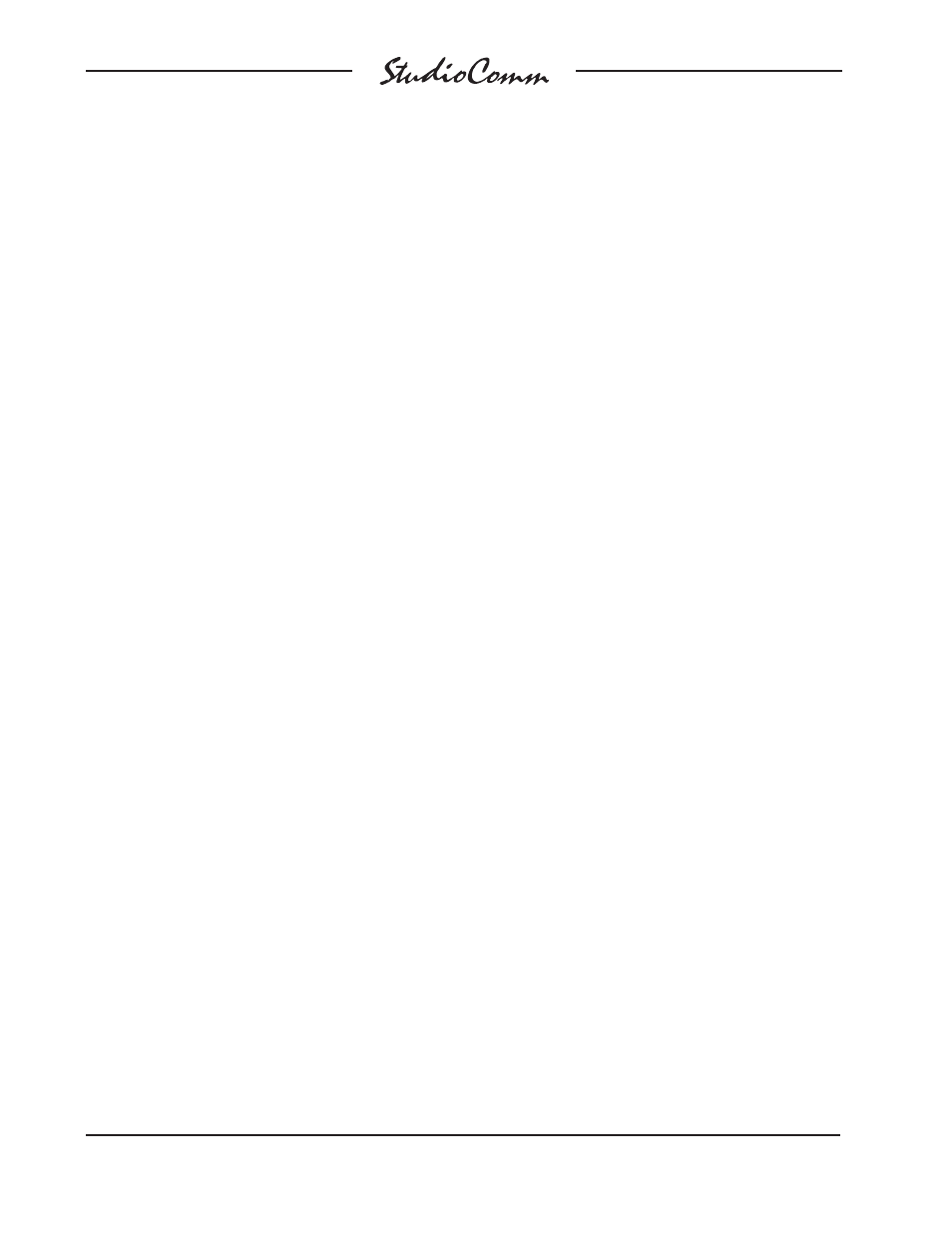Studio Technologies 780-03 V.4.15 User Manual
Page 38

Issue 1, April 2015
Model 780-03/790 User Guide
Page 38
Studio Technologies, Inc.
for Surround
with the mute all button will light whenever
mute all is active. Note that if mute all is
enabled via the remote mute all function,
the mute all LED will flash.
Dim
The dim function is provided for user con-
venience, allowing the post-fader digital
and analog monitor output level to be re-
duced by a fixed amount. The Model 790’s
configuration mode allows the dim level
to be selected from among four choices:
–10.0, –15.0, –20.0, or –25.0 dB. Pressing
the dim button will enable the function. The
dim button is always set to “latch” the func-
tion on and off. The 4-digit display, when
selected for output level mode, will indicate
the revised post-fader monitor output level.
When dim is active the post-fader monitor
output level reduction will apply no matter
whether the level is being set by the ro-
tary level control or by the reference level
button. The LED associated with the dim
button will light whenever dim is active. If
dim mode is enabled via the remote dim
function the dim LED will flash.
It’s worth using a few sentences to discuss
the auto dim off function. Whenever dim
is enabled due to the dim button being
pressed, and the rotary level control is
active (reference level mode is not active),
changing the setting of the rotary level
control will automatically turn off dim. The
auto dim off function is a unique attempt
at protecting the aural health of users. No
longer will there be a heart-stopping blast
of audio when the dim button is pressed,
supposedly to enable dim, but actually
turning dim off because it was already
enabled. It’s hard to explain unless you’ve
experienced this in person—trust us, this
situation can and does happen!
Note that the auto dim off function is not
active whenever dim is enabled due to the
remote dim function being active. This al-
lows remote control equipment, such as a
talkback system, to reliably dim the moni-
tor outputs.
LFE Low-Pass Filter
The LFE low-pass filter function is pro-
vided to emulate the processing done by
some distribution formats to the signal
present on an LFE channel. Unlike the
seven main surround channels, an LFE
channel is typically bandwidth restricted
to save digital “bits.” It’s important that an
audio mix maintains its integrity when such
LFE bandwidth restrictions are in place.
When enabled the LFE low-pass filter
function applies a filter with a –6 dB cutoff
frequency of 120 Hz and a slope of 48 dB-
per-octave to the selected surround input
source. To enable the LFE low-pass filter
function simply press the LFE low-pass
button. The associated LED will light when
the filter is active in the LFE audio path.
Philosophy dictates how the filter function
should be used. The function can be used
as a final “double check” to ensure that
material will maintain overall integrity when
digitally processed. Enabling the filter dur-
ing a final listening session should find the
spectral content remaining constant. If the
mix is impacted, content has been incor-
rectly routed to the LFE channel! It’s also
acceptable to leave the filter enabled at all
times. This will ensure that an audio mix
will “hold up” when processed. However,
this may mask content remaining in the
LFE channel which, although it won’t be
present after processing, may be confus-
ing to mastering engineers or other per-
sonnel who monitor the original source
material.
